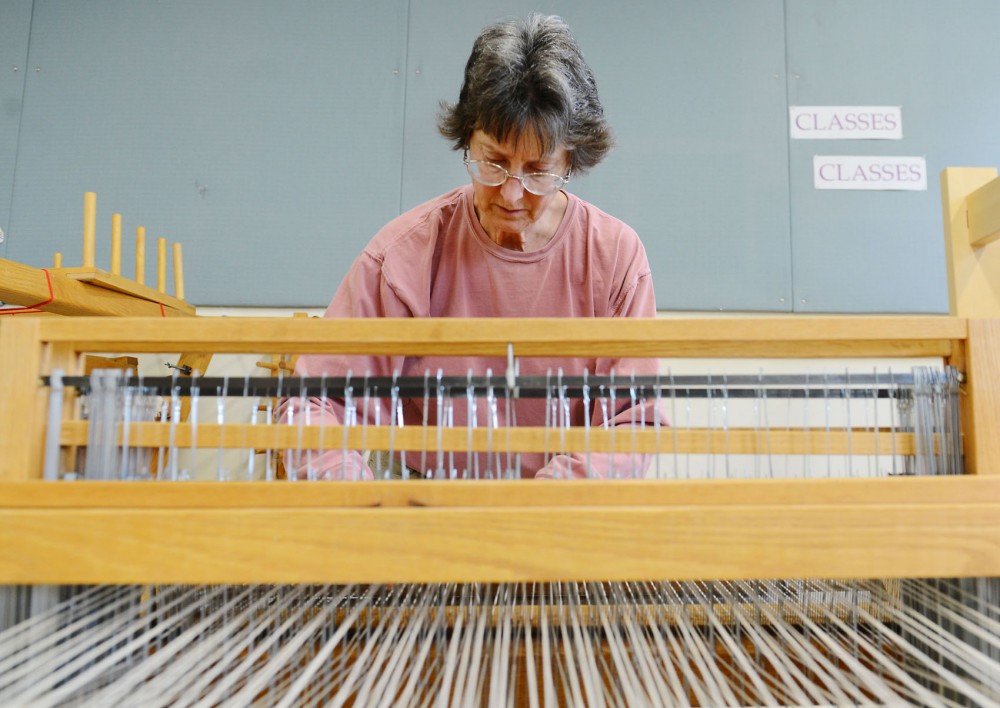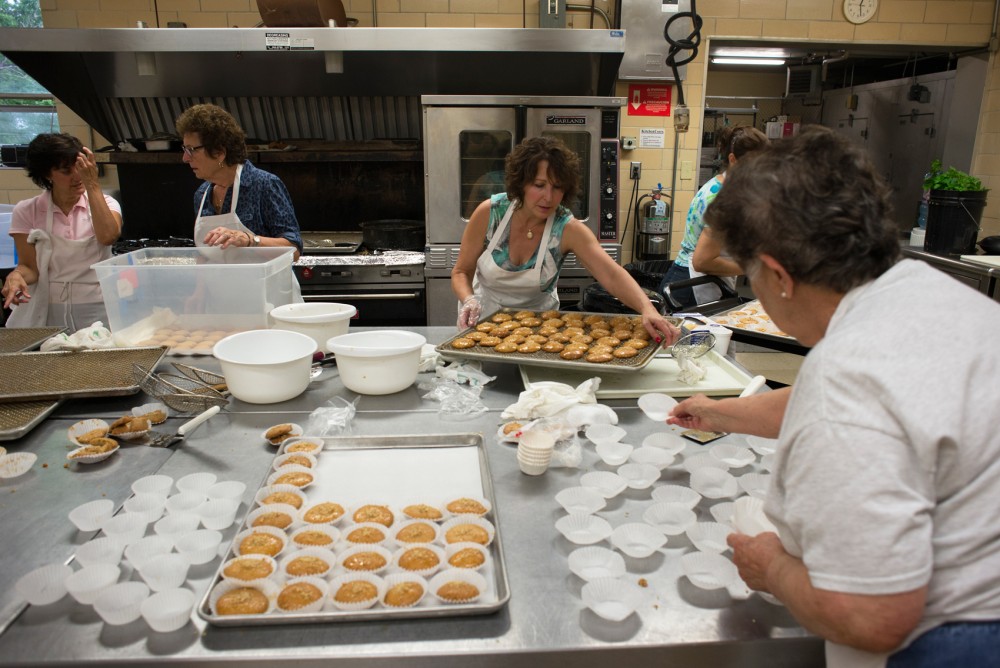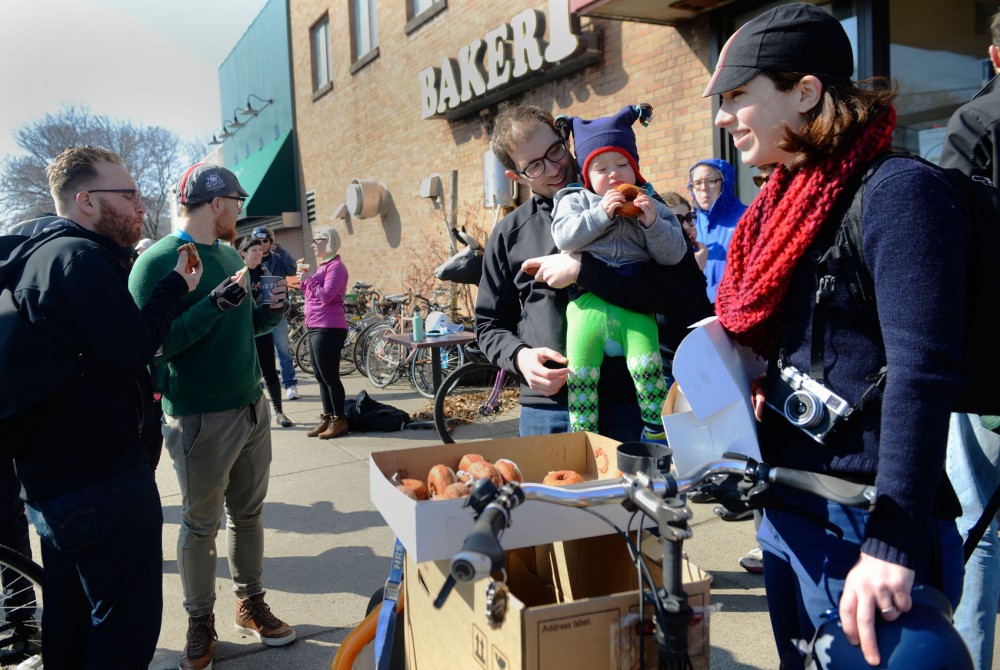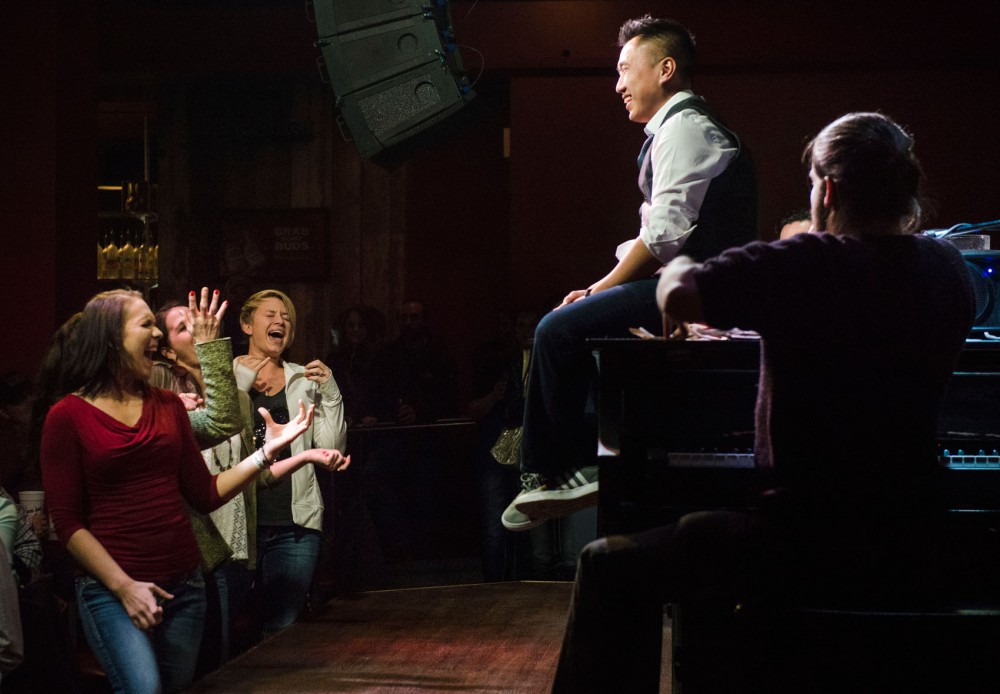Chillon Leach knows a lot about sheep. She can tell you which breeds have more crimp in their fleece, which fleeces best hold dye and how much fleece the average sheep can produce. At most, some breeds can produce up to twenty pounds, she said.
Leach is a spinner. She purchases fleece from local sheep farmers, washes and dyes it and finally spins it into yarn. Leach bought her most recent batch of fleece from a University of Minnesota professor who raises Jacob sheep.
“They name them and you get to meet them, which just adds this whole other thing,” she said.
Thanks to the Weavers Guild of Minnesota, located in the Textiles Center on University Avenue, Leach can complete the whole spinning process in one place.
Leach, along with other spinners and weavers, will be showing off her skills at the Weavers Guild’s upcoming Fiber Fair, a three day event at the Northrup King Building. The Fiber Fair is an opportunity for members to sell anything from fleece and spun yarn to hand towels and tapestries just before the holidays.
“We have 70 artists and each artist brings like, 20 to 100 pieces,” said Becky Franklin, operations manager of the Weavers Guild.
The Weavers Guild started in 1940 and moved to the Textile Center in 2001. The Guild has grown to 450 members. Each member pays $50 per year to access to the biggest textile-focused lending library in the country, take part in any of the 200 classes offered throughout the year and rent equipment like looms and spinning wheels.
“The guild promotes a craft,” Franklin said. “It used to be more about the apprentice idea. There would be the masters and the people who learned from them.”
The guild has changed in modern times. Guilds are still used to promote various crafts and facilitate the exchange of valuable information and resources, but teachers and students have replaced the master and apprentice concept.
Keith Pierce joined the Weavers Guild just over two years ago and is already teaching classes in card-weaving and winning blue ribbons at the Minnesota State Fair. His initial attraction to the craft stemmed from his background in mathematics. Card weaving, unlike knitting or crocheting, allows Pierce to create geometric shapes with yarn.
On Thursdays, he meets up with other Guild members who call themselves the Banditos. Their study group focuses on back strapping, a process for weaving smaller projects without utilizing the floor loom.
A normal loom is like a cross between an organ and a harp. Groups of strings, called warps, are separated by metal wefts that weavers move around by pressing down on floor treadles, akin to the floor pedals of an organ. Each weft is attached to a different treadle, which allows weavers to switch colors and make different patterns.
Setup is the slowest part of weaving because each individual warp has to be threaded through a weft. That’s a lengthy process when you’re working with about 160 strings. However, the actual weaving is quick.
“That’s what’s so satisfying about weaving versus knitting,” weaver Geri Retzlaff said. “You can have a finished product a lot quicker than you can with knitting.”
Like knitting, weaving and spinning are often meditative. Leach said working with multi-colored fleeces is just enough to cheer her up during harsh Minnesota winters.
When she’s not running fleece through a drum card, a device that aligns fleece fibers, Leach is a full-time painter. She said she comes to the Guild not only for the community, but for the inspiration. Most members are willing to share new techniques and information with others.
“As an art major, when I started spindle spinning, all the sudden I started getting ideas for installation art,” Leach said.
Everyone approaches weaving and spinning differently. Some like to work fast and freely, while others work slowly and with great precision.
“It’s very personal,” Pierce said. “It’s a reflection of yourself.”
What: The Weavers Guild of Minnesota’s 39th Annual Fiber Fair
When: 10 a.m.- 7 p.m., Friday; 10 a.m.-5 p.m., Saturday; 12-4 p.m., Sunday
Where: Studio #332, Northrup King Building, 1500 NE Jackson St., Minneapolis
Cost: Free











